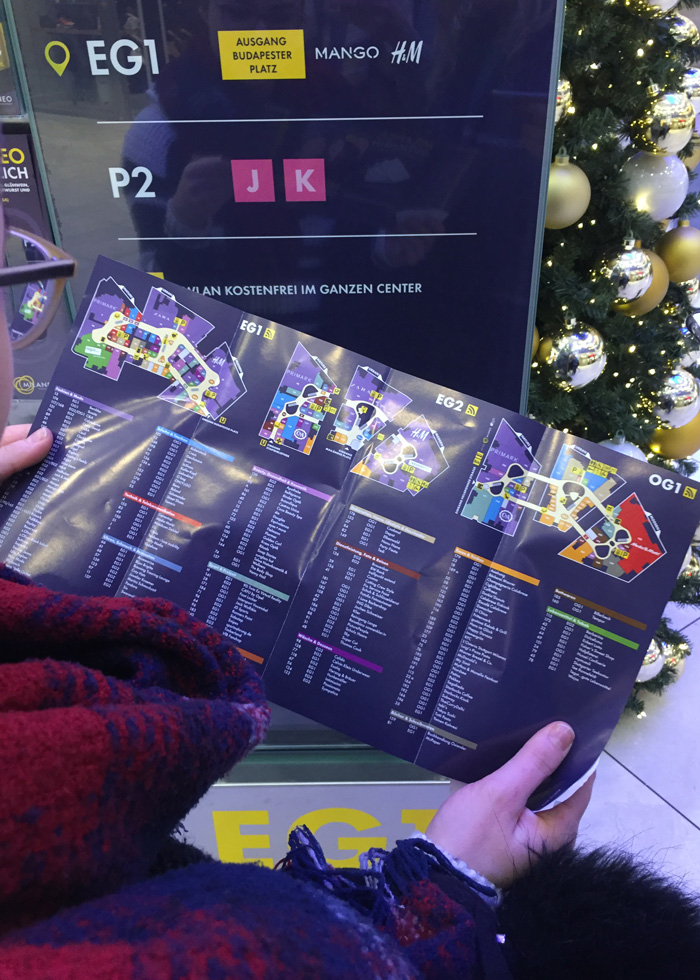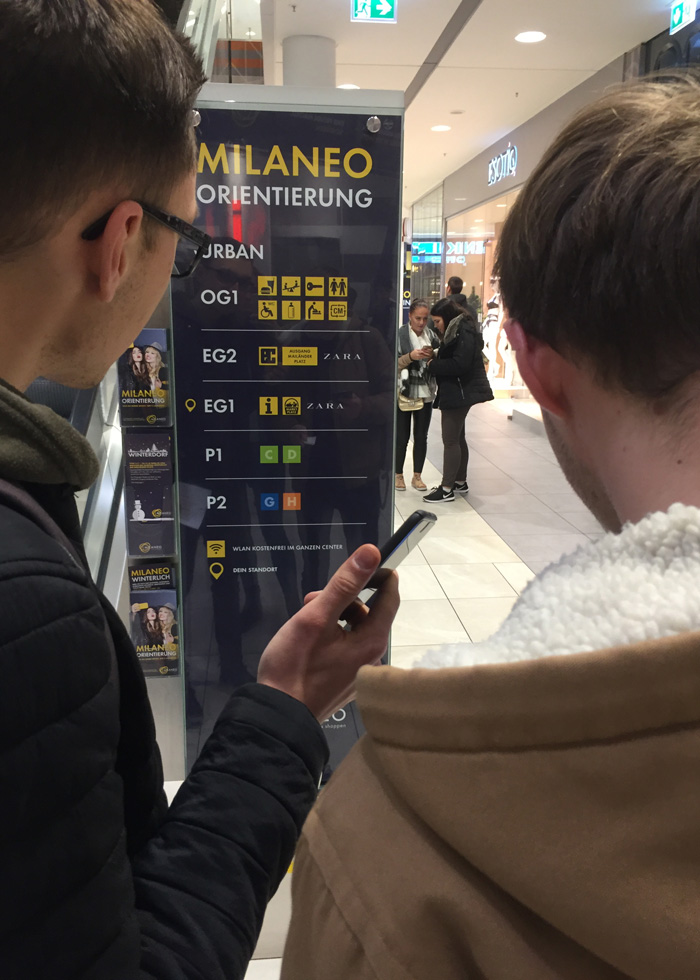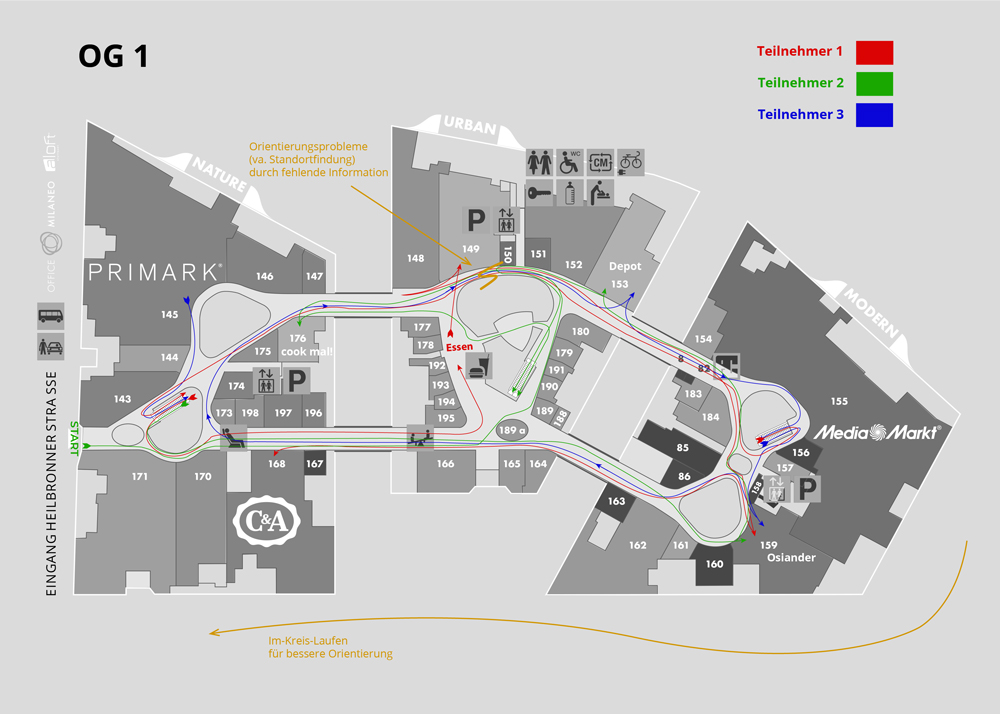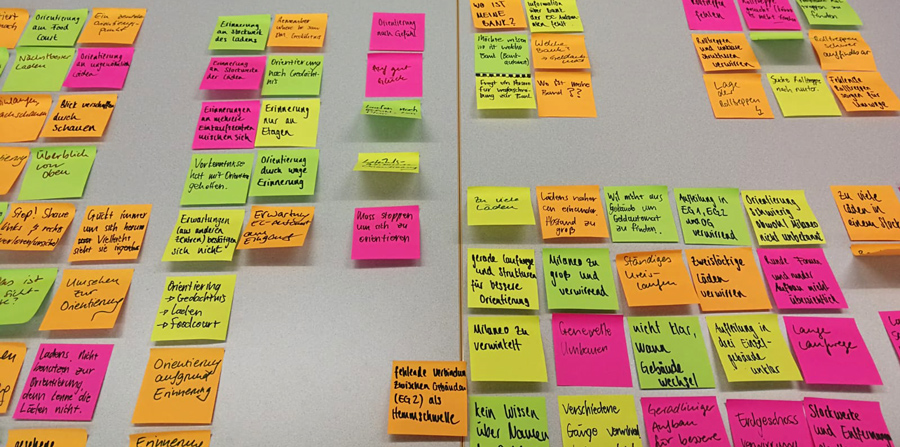Contextual Design
For the university subject Human Computer Interaction, my group and I were tasked with using the Contextual Design Method, developed by Hugh Beyer and Karen Holtzblatt to solve a problem of our choice.
In Stuttgart the popular shopping centre Milaneo is known for its confusing layout and being difficult to navigate. Nevertheless, customers still choose to visit the centre frequently. Our research question was therefore aimed at finding out just how confusing or displeasing navigating this building is, and what strategies shoppers use to find their way.
Due to time limitations, we would not be able to perform the entire Contextual Design process. So we only focused on the initial steps, which were contextual inquiry, interpretation session and affinity diagram, and work models.
Contextual inquiry
During this phase we deviated from the traditional contextual inquiry interview approach. Where one is not required to prepare anything beforehand, but rather observe the test participant in their environment and ask questions accordingly, we opted to give each of our three participants a shopping list of several items. Additionally, they were required to add a few items of their own choosing. We also stipulated that they had to buy each item at a different store, so that they did not end up buying everything in one place, as this would be ineffective regarding our research. The interview consisted out of three people, the participant, the person asking the questions and audio-recording the interview, and the note-taker who quietly followed in the background while tracking the route and taking pictures.



Interpretation session & affinity diagram
We listened to the recordings of the interviews and noted all aspects regarding the navigation on post-its. These post-its formed the beginning of our affinity diagram. In the end, the affinity diagram helped us identify the key problems shoppers face, namely structure, environment and information placement.


Work models:
To communicate the results from the interpretation session more clearly, the information was visualised into five different work models. These models were chosen as we regarded them as the most appropriate.
- Artifact Model
- Decision Point Model
- Identity Model
- Physical Model
- Sequence Model
I thoroughly enjoyed the process, and the intensity with which one got to learn about the user and “product”. Unfortunately the project had to end here, but I hope to someday use this method again, this time from start to finish.